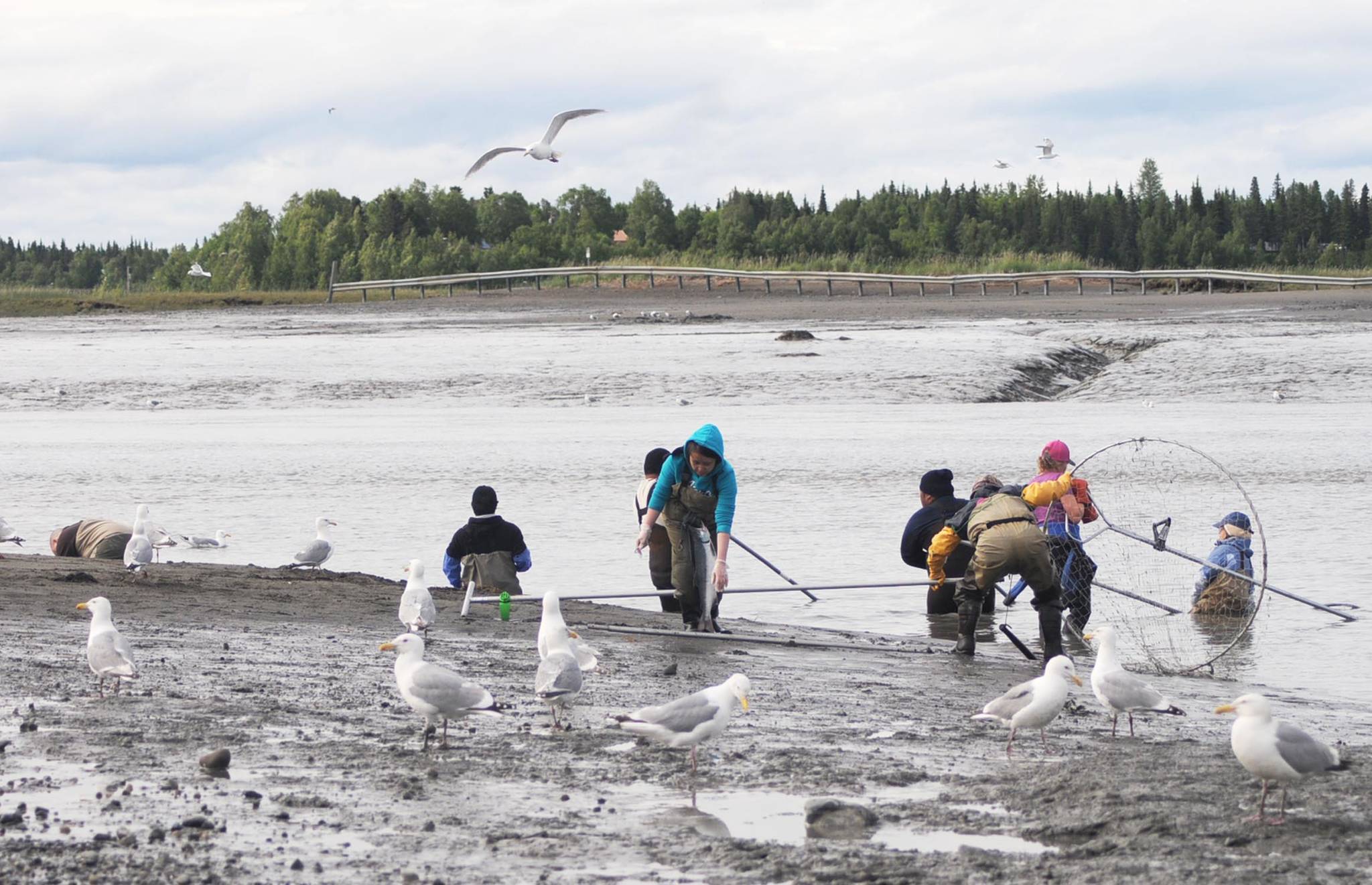Personal-use dipnetters at the Kasilof River may have access to a variety of food carts, firewood salesmen and other vendors on the north beach.
Every summer, beginning June 25 and ending Aug. 7, thousands of people flock to the mouth of the Kasilof River to dipnet for the sockeye salmon returning there. To help handle some of the traffic damaging the dunes and beach area around the north side of the river’s mouth, the Alaska Department of Natural Resources’ Division of Mining, Land and Water recently finished a road improvement, parking lot and dune fencing project to handle the traffic there. Another project is planned for the south side of the mouth, but it’s still in the planning phase.
Now, based on interest from business owners, the state is looking at establishing a permit system for vendors on the north side of the Kasilof River mouth.
John Forbes, a natural resource technician with the Division for Mining, Land and Water, said in an email that the state got a request for a specific site near the river mouth and is proposing five sites in the parking area.
“There have only been a few vendors operating in the Kasilof Special Use Area over the past years,” Forbes said.
The vendors would be allowed to operate in the four corners of the parking lot, with one more site on a paved pull-through on the southern end of the lot, according to a map published with the public notice for the permits on Friday. Anyone can apply, though the state won’t guarantee that a permit will be granted, Forbes said.
Land use permits are usually issued for five years but could be issued on a year-to-year basis. Permits for six months or less in a calendar year are $500, with permits up to twelve months costing $1,000, Forbes said.
“The funds go into the DNR’s general fund,” he said. “Day-use registration ($25 online-$50 paper), is not a permit but would allow day-use authorization to the vendor, however they wouldn’t be able to use to the designated sites and could not camp overnight.”
Forbes said the department is planning to make the permits available for the 2018 season, as long as the decision is approved, available on a first-come, first-serve basis. Permits can take two or three months to review and approve, depending on workload and staffing, he said.
“However, we are intending to streamline these requests by providing a general permit and designating sites for vending on the north side of the Kasilof,” he said. “If the request is fairly straightforward such as selling prepackaged goods, we should be able to issue the permit in under a week. If the request involves anything out of the ordinary, we may send the application out to a 14-day agency review to allow other agencies the opportunity to provide their input towards our decision.”
The plan is out for public comment until March 12.
Beach-based vendors already serve the personal-use dipnet fishery on the north beach of the Kenai River during July. The city of Kenai issues permits for businesses in the parking lot the city maintains there, with the vendors largely being food trucks and ice vendors.
The north side of the Kasilof River has seen rapid growth in use and development over the last decade. Angler days in the personal-use fishery grew from 5,552 in 2008 to a high of 10,346 in 2015, according to the Alaska Department of Fish and Game.
Residents in the area have raised concerns about the lack of enforcement authority and management for the fishery. Because the area is not a park nor in a city, the Division of Mining, Land and Water manages the land around the fishery, while the Fish and Game manages the fishery and the Alaska State Wildlife Troopers provide enforcement there.
Over the years, volunteers set up fencing to protect the dunes from vehicle and foot traffic and camping, and nearby residents have spoken out about the need for more roads and management. During a public meeting in June 2017, Department of Natural Resources Commissioner Andy Mack said if the public supported it, the state could pursue the formation of a Kasilof Public Use Area or park, which would provide more funding and enforcement authority, like park rangers.
Reach Elizabeth Earl at elizabeth.earl@peninsulaclarion.com.


